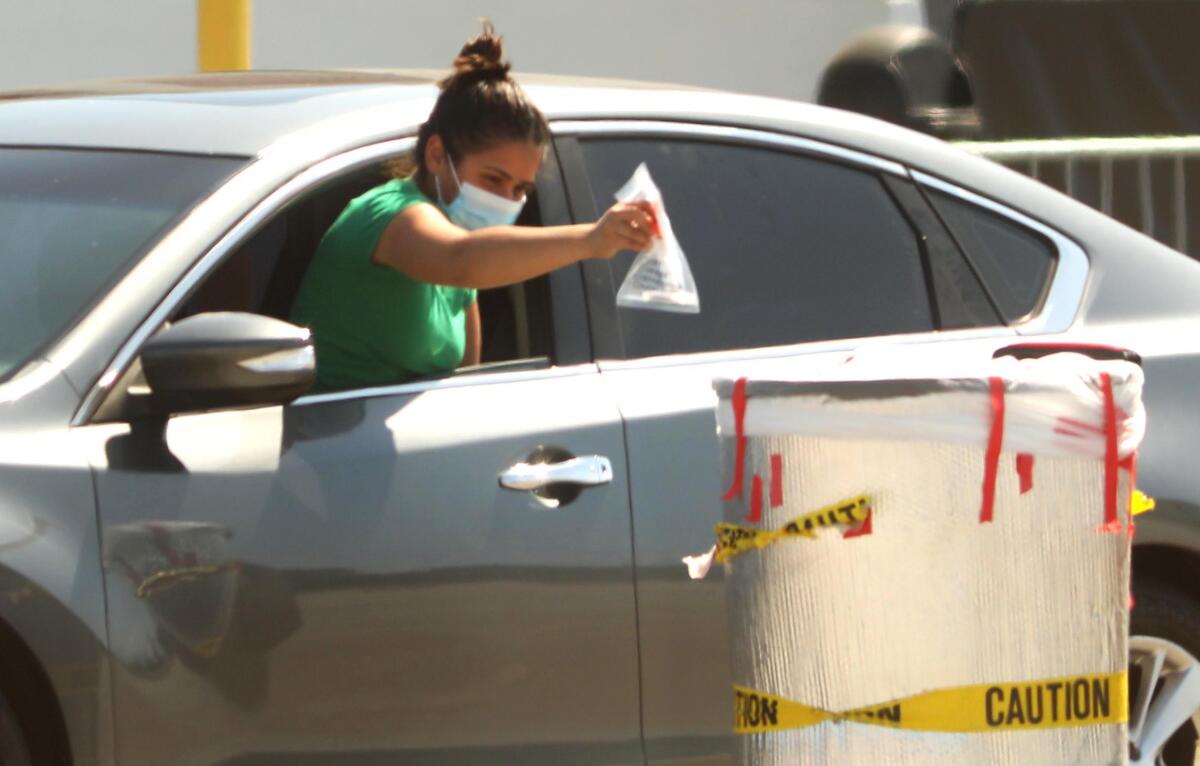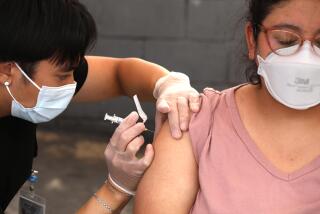The coronavirus waiting game: It can take days for symptoms to appear, longer for severe illness

It can take time for COVID-19 symptoms to worsen following exposure to the coronavirus. While most people only experience mild or no symptoms at all, it can take roughly a week or so before severe illness strikes for those who do end up experiencing life-threatening symptoms.
Here are some key facts about how long it can take for COVID-19 symptoms to worsen among patients who develop severe illness, according to the Centers for Disease Control and Prevention.
- After onset of illness or symptoms, the median time it can take to start feeling shortness of breath is about five to eight days.
- After onset of illness or symptoms, the median time it can take to start to experience acute respiratory distress syndrome is about eight to 12 days.
- After onset of illness or symptoms, the median time it can take to be admitted to the intensive care unit is about 10 to 12 days.
“Clinicians should be aware of the potential for some patients to rapidly deteriorate one week after illness onset,” the CDC said on its website.Chances of serious illness
In general, about one in five people with COVID-19 experience severe or critical illness.
Among more than 44,000 people with COVID-19 in China, researchers found the following:
- 81% experienced mild or moderate symptoms, up to mild pneumonia.
- 14% experienced severe symptoms, such as shortness of breath, a lack of adequate oxygen, or more advanced pneumonia.
- 5% experienced critical symptoms, including respiratory failure, shock or multiorgan system dysfunction.
Of those who were diagnosed with coronavirus infection, 2.3% died.
Among those cases, the rate at which those who were infected with the coronavirus died — a percentage known as the case fatality rate — is highest among older people:
- Of COVID-19 patients aged 80 or older, 14.8% died;
- Of those in their 70s, 8% died;
- Of those in their 60s, 3.6% died;
- Of those in their 50s, 1.3% died;
- Of those in their 40s, 0.4% died;
- And among those younger than 40, 0.2% died.
According to the CDC, after accounting for differences in age and prevalence of underlying medical conditions, mortality associated with COVID-19 in the U.S. is similar to that from China.
Among U.S. cases of COVID-19 where researchers understand what happened to the patient, 19% were hospitalized, and 6% were admitted to the intensive care unit.For those who are hospitalized
Among patients who do become hospitalized, about 26% to 32% have been admitted to the intensive care unit, according to the CDC.
Among those who entered the intensive care unit, the mortality rate among those patients ranged from 39% to 72%.
The median length of hospitalization among those who survived was 10 to 13 days.How long it takes for symptoms to begin
It takes a median of four to five days for symptoms of COVID-19 to begin following a person’s exposure to the coronavirus, although, generally speaking, it can take as long as 14 days.
How long it takes for coronavirus tests to detect infection
It can take roughly five to seven days for a coronavirus infection to trigger a positive test result, according to Dr. Otto Yang, an infectious disease specialist at UCLA.
Getting tested too early after a person is exposed to the coronavirus can yield a negative test result, even though the virus has entered the body and has started to replicate.
It can take time for the virus to reproduce to levels high enough in the body to be picked up by a test.
“A single negative test does not mean you will remain negative at any time point after that test,” the CDC says.What are guidelines for those who are found to be infected?
People found to be infected with the coronavirus should be isolated from people who are not infected.
They should remain isolated until at least 10 days since symptoms first appeared, at least 24 hours with no fever without taking fever-reducing drugs, and other symptoms are improving. The loss of taste and smell “may persist for weeks or months after recovery and need not delay the end of isolation,” the CDC said.
Those with severe COVID-19 illness — like those needing care in a hospital and needing oxygen — may need to stay in isolation for possibly up to 20 days after the symptoms began.
People testing positive for the virus but with no symptoms can resume being with other people after 10 days have passed since the first positive test. Doctors might suggest that the patient get tested repeatedly to end the isolation earlier, such as through two consecutive negative tests done at least 24 hours apart. What are guidelines for those who came into contact with infected people?
People who have been in “close contact” with someone who has COVID-19 should be quarantined, which means staying away from others until they know if they’ve been infected.
The CDC defines close contact as being within six feet of someone who has COVID-19 for 15 or more minutes; providing care to someone with disease; having direct physical contact with an infected person, such as through a hug or a kiss; sharing eating or drinking utensils; or being sneezed or coughed out by the infected person.
The CDC says those under quarantine should stay at home for 14 days after their last contact with a person with COVID-19, and monitor for fever, cough and shortness of breath.
“Even if you test negative for COVID-19 or feel healthy, you should stay home (quarantine) since symptoms may appear two to 14 days after exposure to the virus,” the CDC says. How long is an infected person infectious for?
The CDC says that people with mild to moderate COVID-19 illness may produce infectious coronavirus that can infect other people for up to 10 days after symptoms begin.
But a small percentage of those who have severe COVID-19 illness can remain infectious of up to 20 days.Can people be reinfected with the coronavirus after getting better?
There’s limited data about reinfection with the coronavirus after recovery from COVID-19, according to the CDC. “This is a new virus, and CDC is actively working to learn more,” the agency said.
Times staff writers Emily Baumgaertner and Deborah Netburn contributed to this report.
More to Read
Sign up for Essential California
The most important California stories and recommendations in your inbox every morning.
You may occasionally receive promotional content from the Los Angeles Times.











